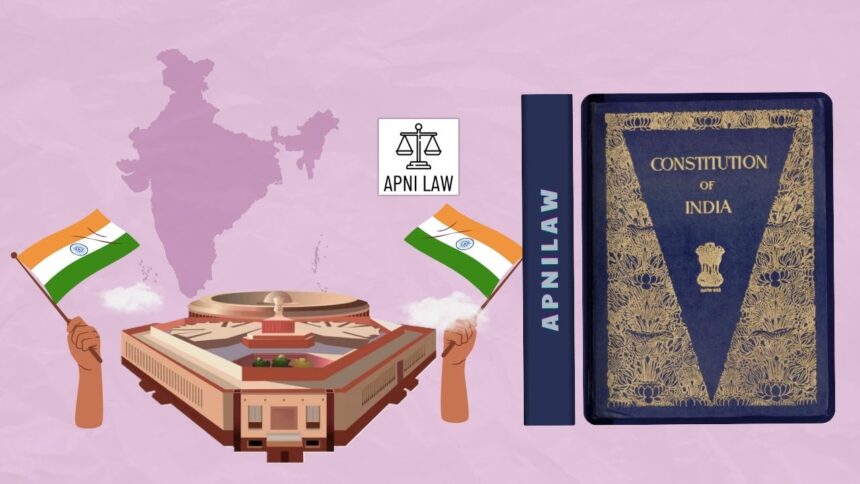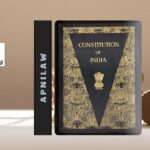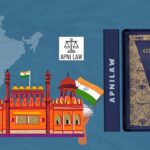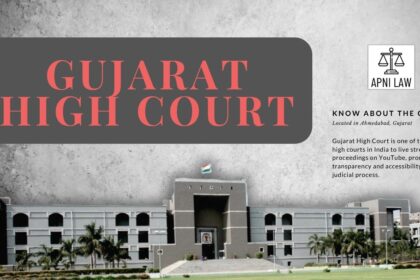What Is Article 239AA of the Indian Constitution?
Article 239AA of the Indian Constitution grants special status to the National Capital Territory (NCT) of Delhi, giving it a unique governance model that blends features of both a Union Territory and a State. This special provision recognizes Delhi’s dual character, as India’s national capital and as a region with its own elected government. It ensures that while Delhi has democratic representation, the Union Government retains control over key administrative areas vital to national security and unity.
Why Was Article 239AA Introduced?
Article 239AA was added to the Constitution through the 69th Constitutional Amendment Act, 1991, following the S. Balakrishnan Committee Report (1987). The Committee recommended a legislative setup for Delhi to address its increasing population, administrative challenges, and demand for local representation. However, because Delhi serves as the nation’s capital, complete statehood was considered unsuitable. Thus, Article 239AA created a hybrid model that allowed local self-government while maintaining central oversight.
What Did the 69th Constitutional Amendment Change?
Before the amendment, Delhi functioned purely as a Union Territory administered by the President through a Lieutenant Governor. The 69th Amendment transformed Delhi into the National Capital Territory (NCT), introduced a Legislative Assembly, and allowed for a Council of Ministers led by a Chief Minister. This change provided the people of Delhi a voice in their governance while safeguarding national interests through continued Union control.
How Is the National Capital Territory (NCT) of Delhi Defined?
Article 239AA officially renamed the Union Territory of Delhi as the National Capital Territory of Delhi. The Lieutenant Governor (LG) was appointed as the Administrator of the NCT, representing the President. The LG functions as the constitutional head of the territory, similar to a Governor in a State, but with powers specifically limited by the Constitution and parliamentary laws.
What Powers Does the Delhi Legislative Assembly Have?
The Legislative Assembly of Delhi was created to make laws on subjects mentioned in the State List and Concurrent List of the Seventh Schedule. However, there are three important exceptions. The Delhi Assembly cannot make laws on public order, police, and land. These areas remain under the control of the Union Government through the Lieutenant Governor.
Despite these exclusions, the Assembly can legislate on other matters such as education, health, trade, transport, and local governance. This legislative authority allows Delhi to function as a partially autonomous entity within India’s constitutional framework.
What Is the Role of the Council of Ministers and the Chief Minister?
Article 239AA provides for a Council of Ministers, headed by a Chief Minister, to aid and advise the Lieutenant Governor in matters where the Assembly has legislative competence. The LG is expected to act based on this advice except in cases where he disagrees. If such a disagreement arises, the LG can refer the matter to the President of India, whose decision is final.
This provision ensures a mechanism for resolving conflicts between the Union and Delhi’s elected government, while upholding the principle of cooperative federalism.
Does Parliament Retain Any Control Over Delhi?
Yes. Even though Delhi has its own Legislative Assembly, Parliament retains supreme authority under Article 246(4) to make laws on any subject for the National Capital Territory. This ensures that the Union Government maintains control over matters of national importance, especially considering that Delhi hosts the central government, foreign embassies, and vital national institutions.
Parliament’s overriding power reflects Delhi’s unique position as both a city of residents and the seat of national governance.
What Is Meant by “Limited Statehood” for Delhi?
The Supreme Court has described Delhi’s constitutional status as “sui generis”, meaning it is a unique entity that does not fully fit the category of either a State or a Union Territory. This concept of limited statehood allows Delhi to function democratically with an elected government but within boundaries defined by the Constitution and Parliament.
Thus, Delhi enjoys autonomy in everyday governance while remaining under central supervision in areas that affect the entire nation.
How Has the Judiciary Interpreted Article 239AA?
The Supreme Court has played a major role in clarifying the constitutional balance between the Lieutenant Governor and the elected government.
In the landmark case Government of NCT of Delhi v. Union of India (2018), the Court held that the Lieutenant Governor must act on the aid and advice of the Council of Ministers in all matters where the Legislative Assembly has the power to legislate. The judgment emphasized that the LG cannot act as an obstacle to governance and must respect the decisions of the elected government except in exceptional cases where he must refer issues to the President.
In the 2023 Constitution Bench judgment (Services Case), the Supreme Court reaffirmed that the elected Delhi government has control over services, meaning bureaucratic appointments and transfers, except in the three excluded subjects—public order, police, and land. This decision strengthened democratic accountability by ensuring that the elected representatives hold administrative control over their officers.
Why Is Article 239AA Considered Significant?
Article 239AA strikes a careful balance between federalism and national security. It ensures that while the people of Delhi enjoy democratic governance through an elected assembly, the Union Government maintains authority over areas essential to national stability.
Delhi’s model under Article 239AA is particularly significant because it provides a constitutional mechanism for power-sharing between the Centre and the local government in a politically sensitive region. It ensures that no single authority has unchecked power while allowing governance to function efficiently.
How Does Article 239AA Affect Centre-State Relations?
Delhi’s governance system under Article 239AA demonstrates India’s flexible federal structure. It blends elements of both centralization and decentralization. The provision ensures that the Union Government can safeguard its national interests in the capital while allowing local citizens to participate in decision-making.
This model also serves as a constitutional experiment that could guide administrative reforms in other regions with complex governance requirements.
What Challenges Arise from Article 239AA?
Despite its balanced framework, Article 239AA has often led to political friction between Delhi’s elected government and the Lieutenant Governor. Disputes over control of services, administrative decisions, and legislative competence frequently reach the courts. Critics argue that the ambiguity in Article 239AA’s language sometimes allows overreach by the Union, undermining the spirit of local self-governance.
However, supporters contend that such oversight is necessary given Delhi’s status as the national capital. The judiciary continues to play a crucial role in interpreting and maintaining the equilibrium between both sides.
What Is the Broader Impact of Article 239AA?
The special status under Article 239AA has transformed Delhi into a semi-state with a constitutional identity of its own. It represents India’s effort to balance democratic governance, administrative efficiency, and national security in one of the world’s most complex urban centers. The provision ensures local participation through elections while keeping strategic control in the hands of the Union.
For any specific query call at +91 – 8569843472
Conclusion
Article 239AA of the Indian Constitution symbolizes a unique constitutional innovation that blends democracy with central authority. By granting limited statehood to Delhi, it recognizes the city’s dual identity as a home to millions of citizens and as the seat of India’s national government.
Through judicial interpretation and constitutional design, Article 239AA continues to define Delhi’s governance model, one that upholds democratic values while ensuring national stability. In essence, Delhi remains a Union Territory with legislative powers, functioning under a delicate balance of autonomy and Union control, perfectly capturing India’s spirit of cooperative federalism.








